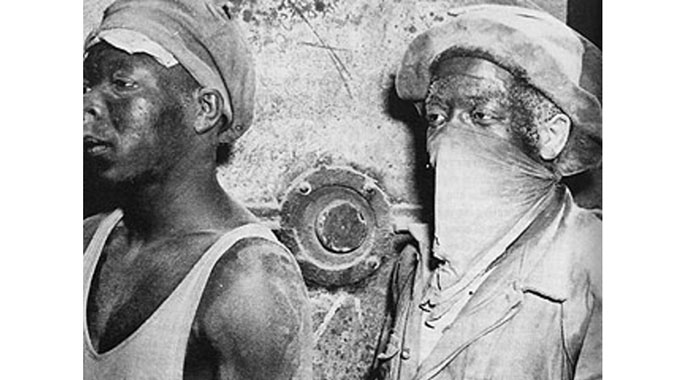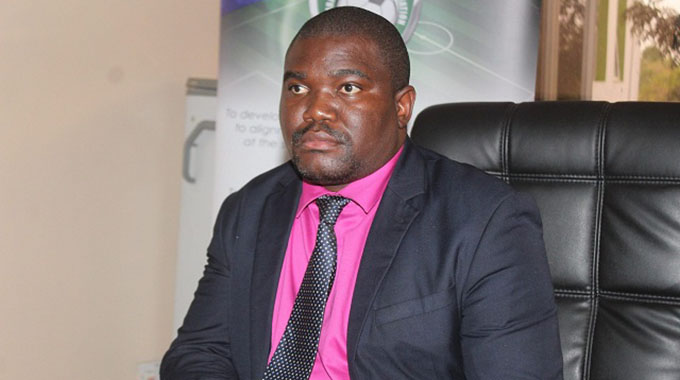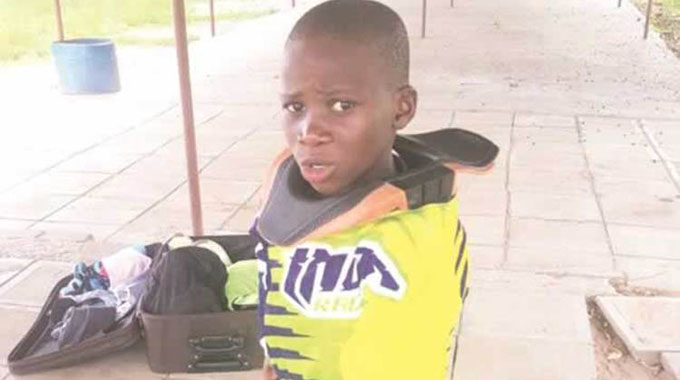Compensating ex-Wenela workers: More than just money

Sifelani Tsiko Senior Writer
“There is a train that comes from Namibia and Malawi, there is a train that comes from Zambia and Zimbabwe. There is a train that comes from Angola and Mozambique, from Lesotho, from Botswana, from Swaziland, from all the hinterland of Southern and Central Africa. This train carries young and old, African men who are conscripted to come and work on contract. In the golden mineral mines of Johannesburg and its surrounding metropolis, 16 hours or more a day for almost no pay. Deep, deep, deep down in the belly of the earth. When they are digging and drilling for that shiny mighty evasive stone.”
This is a song: “Isitimela,” the late Hugh Masekela, one of the world’s finest and most distinctive horn player of his time, sang to capture the tough and exploitative mining conditions inside Africa’s biggest economy — South Africa.
It was an angry political voice that highlighted the harsh conditions black workers had to endure inside South Africa’s gold mines.
Since more than 100 years ago, people from all over southern Africa trekked down to South Africa to work under miserable conditions in South Africa’s famous — or infamous — diamond and gold mines.
Migrants worked under appalling conditions with no proper safety frameworks and compensation.
Rich white elites like Cecil John Rhodes and other mine owners built massive wealth and helped expand Britain’s empire in Africa using cheap labour.
The discovery of gold and diamonds created huge demands for labour. This led to a great increase in the number of migrant Africans from as far afield as the DRC.
Historians say between 1871 and 1875, an estimated 50 000 Africans arrived every year at the diamond mines to work for meagre wages.
White capital inside South Africa and in Britain was built on outright preying on the labour of Africans working in the gold and diamond mines.
Many people died inside these mines without trace and without even the relatives being informed in most countries in southern Africa.
Both local and migrant workers who worked in both opencast and underground operations were often exposed to a variety of safety hazards: falling rocks, exposure to dust, intensive noise, fumes and high temperatures, among other things.
Most of the miners also suffered from diseases such as silicosis and tuberculosis (TB) and a host of other diseases.
The black miners got a pittance and were never compensated in case of injury or death.
The mining industry boomed in South Africa for decades during the apartheid years on the back of cheap labour.
Fatality rates were so high during those years as there was a poor preventative safety and health culture at the mines.
Many died and those who were lucky to return, got nothing as pension.
Stories abound of ex-Wenela workers who got a bicycle and a few dollars as pension after working for years in the mines.
Calls have been growing louder over the years to compensate the workers or surviving relatives of people who struggled in the South African mines.
After mounting pressure, some South African mines reached a conditional settlement to pay compensation of up to R500 000 each to thousands of South Africans, Zimbabweans and many others within the SADC region who used to work in the neighbouring country’s mines in the 1970’s.
According to a notice of proposed class settlement; six companies, African Rainbow Minerals, Anglo-American SA, AngloGold Ashanti, Gold Fields, Harmony, Sibanye-Stillwater and some of the affiliate mining entities reached a conditional settlement to pay compensation to eligible former Wenela mine workers and dependants of those who have passed away.
Wenela
Wenela is an acronym for Witwatersrand Native Labour Association, comprising former South African mine workers drawn from Zimbabwe, Malawi, Botswana and Mozambique.
Compensation is being overseen by the Tshiamiso Trust (Tshiamiso is a Setswana word meaning “to make good” or “to correct”).
The trust was established following a court approval and will be responsible for the distribution to claimants.
The distribution of claims and the administrative functions, including the tracking and tracing of eligible claimants and the facilitating of benefit medical examinations will be overseen by a board of trustees. The trust is already advertising in Zimbabwe.
Black mineworkers bore the brunt of deaths, injuries and TB on the mines and this is a modest attempt to compensate the damage that was done to the workers.
The legacy of pervasive racial discrimination on the mines still endures, and the compensation won’t even reach out to the real beneficiaries because of the time lapse, lack of records, lack of an aggressive marketing of the proposed class settlement and the disconnected nature of the claimants.
The proposed settlement is in the typical small font — insurance style — to try and evade the massive claims that could be demanded by the victims.
The reparations or restitution from these companies will not filter to the real beneficiaries and there is need to press for more meaningful compensation over and above what will be given to a few claimants.
Within this evolving process of dealing with the past, the issue of compensating victims should be at the forefront of the public discourse with innovative ways to press the rich South African mines to contribute more say to creation of jobs, supporting health and education programmes within the SADC region.
Addressing injustice through the payment of the claimants won’t be enough. Zimbabwe and most other southern African countries need to find strategic areas in job creation, health and education which can be funded from the Tshiamiso Trust as part of rehabilitation, acknowledgement of injustice and restitution.
One who worked to death
I have a relative who died in 1960 inside a South African mine and his family only came to know about it in 1982. The family never benefited anything and the relatives have all died, including the children. Today, no one from that family line can easily claim compensation successfully. History and documentation is smoke.
In this case, the payment of compensation coming from the perpetrator and going to the victim is no longer possible.
My relative worked and toiled under terrible conditions. He worked to death. And, the only way to create a foundation for remembrance, responsibility and a future to address this dark legacy, is to lobby for a mix of legal acknowledgements by the mining companies as well as having a dedicated fund, though it might not be enough to fund youth vocational training centres, healthcare and education institutions in the ex-Wenela countries of origin.
The processing of compensation for the claimants is cumbersome and the only plausible route is to find a good mix of innovative compensatory strategies that will help support social programmes in Zimbabwe and other Sadc countries.
Payments to a few lucky claimants won’t be effective in addressing the apartheid miners’ moral responsibility to the victims.
Dependants of deceased miners here in Zimbabwe and the entire Sadc region need to be involved in the Tshiamiso Trust, otherwise, the whole proposals will only save the interest of the miners only.
We all know that the suffering inflicted upon thousands of black migrant labourers cannot be undone.
What we as Africans want is for the suffering of our people to be recognised and for the injustice done to them to be named injustice.










Comments